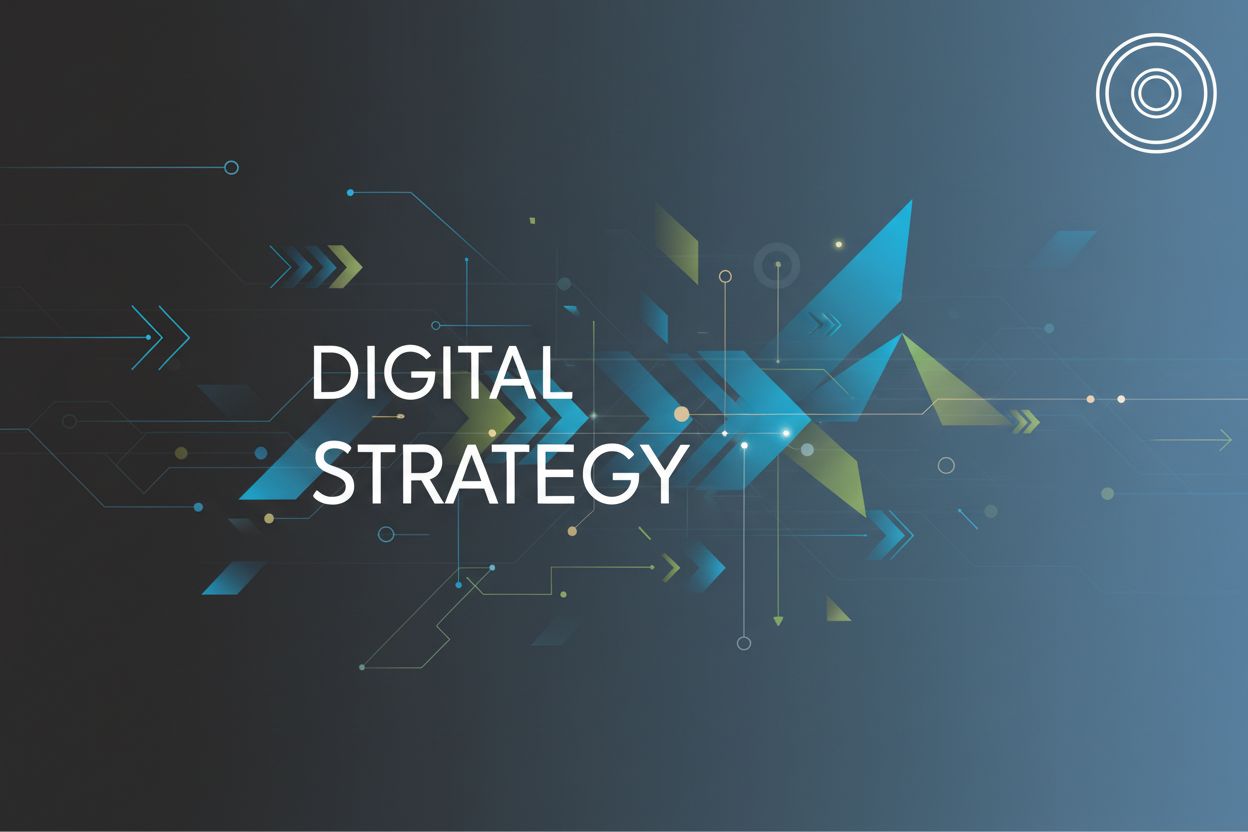A Comprehensive Guide to Effective Location-Based Marketing
TL;DR
Understanding Location-Based Marketing
Did you know that people are, like, way more likely to visit a store if they see an ad for it on their phone when they're nearby? It's kinda creepy but also super effective. That's location-based marketing (lbm) in a nutshell.
Okay, so location-based marketing (lbm) is basically using a person's location to send them relevant ads or info. Think about it: you're walking past a coffee shop, and suddenly you get a notification about a discount latte. Bam! That's lbm at work and is an incredible tool for businesses.
Here's the deal:
- It's all about relevance. Lbm isn't just about spamming everyone with ads. It's about getting the right message to the right person at the right time and place. For example, a pharmacy could send a reminder about flu shots to people who live nearby during flu season.
- More than just ads. It can also be used for things like location-based customer service (think directions to a store) or even internal tracking (like knowing where employees are on a job site). Healthcare providers are using location data to improve patient care, which is cool.
Lbm has come a long way. Remember those early gps devices? Well, it started there. Early GPS devices allowed for basic location tracking, but targeting capabilities were extremely limited, often just showing a user's current position on a map. Then smartphones came along and changed everything. Now, with all the location data we're constantly sharing, businesses can get super targeted with their marketing.
- From gps to smartphones. Early location-based tech was pretty basic. But the rise of smartphones and mobile internet really opened the floodgates. Now, apps can track your location in real-time.
- Mobile is King. Smartphones are what really made lbm take off. Now, apps can track your location in real-time, making it easier than ever to send targeted ads.
- What's Next? ai and machine learning are making lbm even smarter. Expect to see even more personalized and relevant location-based experiences in the future.
So, that's the basics of lbm. Next up, we'll dive into the different technologies that make it all possible.
Key Strategies and Techniques
Okay, so you're wondering how to actually use location data to make your marketing better? It's not just about sending random ads, promise. It's about being smart and strategic. Let's dive into some key strategies, shall we?
Geo-fencing is like drawing a virtual fence around a specific location and triggering an action when someone enters (or exits) that area. Think of it as a digital tripwire.
- How it Works: You set up a radius around a point of interest – could be your store, a competitor's location, or even a concert venue. When someone with a mobile device enters that "fence," you can send them a notification, an ad, or even track their movement.
- Setting up Effective Geo-fences: The size of the fence matters! A small radius (like 50 meters) is good for targeting people right outside your store. A larger radius (a few kilometers) can capture people in the general neighborhood. Timing matters too. You might want to send different messages during peak hours versus off-peak hours.
- Examples: Imagine a coffee shop geo-fencing a nearby office building. During lunch hour, they could send a push notification offering a discount on iced coffee to people inside the building. OR, a car dealership could geo-fence a competitor's lot and send an offer to anyone browsing there. Sneaky, but effective!
People care about whats happening around them. Makes sense, right? So, your content should reflect that!
- Creating Content that Resonates: Think about what makes a specific location unique. Are there local events, landmarks, or inside jokes? Use those in your marketing! A restaurant in Austin, Texas, might create a blog post about the best live music venues nearby. It shows they know the area. To make this more impactful, you'd promote this blog post via targeted social media ads to people within a 5-mile radius of the restaurant, or to users who have shown interest in local music events.
- Leveraging Local News and Events: Is there a big festival coming to town? A new store opening? Tie your marketing into those events. A clothing boutique could run a social media campaign showcasing outfits perfect for the local music festival.
- Personalizing Content Based on Location: Go beyond just mentioning the city name. Use location data to personalize the content even further. For instance, a real estate company could send listings of homes for sale in a specific neighborhood to people who are currently browsing properties in that same area.
This is where the rubber meets the road. You're using location data to serve targeted ads to people in specific areas.
- Using Location Data for Targeted Ad Campaigns: Platforms like Google Ads and social media let you target ads based on location. You can target by zip code, city, or even a specific radius around a business. A gym could target ads to people who live within a 5-mile radius, offering a free trial.
- Platforms: Google Ads lets you target users based on their location when they, like, search for stuff on Google or use Google Maps. For example, you can set up radius targeting around your business or upload custom lists of zip codes. Social media platforms like Facebook and Instagram also offer robust location targeting options, including radius targeting, city/state targeting, and even targeting people who have recently visited specific locations.
- Optimizing Ad Spend: Don't just set it and forget it. Track your results! See which locations are performing best and adjust your ad spend accordingly. A local hardware store might find that ads targeted to homeowners in newly developed neighborhoods are more effective than ads targeted to the entire city.
So, there you have it! A few key strategies to get you started with location-based marketing. Next up? We'll be diving into the different technologies that make all this possible. Get ready for some tech talk!
Implementing Location-Based Marketing Campaigns
Alright, so you're ready to actually do some location-based marketing? Awesome! But before you jump in, you gotta figure out who you're talking to. It's like, you wouldn't shout a marriage proposal at just anybody on the street, right? Same deal here.
First things first: nail down your ideal customer profile (icp). Who are they? What do they do? Where do they hang out (literally)? Don't just say "people who like coffee." Get specific! Are they students cramming for exams? Business people grabbing a quick caffeine fix? Tourists exploring the city?
- Identifying your ideal customer profile: What are their demographics (age, gender, income)? What are their interests, hobbies, and pain points? The more you know, the better you can target them. A financial services firm, for example, might target young professionals in urban areas with ads for investment apps. You can identify ICPs through customer surveys, analyzing website analytics (like Google Analytics to see user demographics and interests), and by using third-party data providers that offer consumer insights.
- Analyzing their location-based behaviors: Where do they actually go? Use location data to see where your target audience spends their time. A clothing store might notice that their ideal customers frequent a nearby yoga studio, so they could partner with the studio for a promotion.
- Segmenting your audience for personalized messaging: Once you know who they are and where they go, you can segment them into groups. A healthcare provider could segment their audience by age and location to send different messages about preventative care.
Okay, so you know who you're talking to. Now, where are you gonna talk to them? There's a bunch of lbm platforms and tools out there, but not all of them are created equal. Some are better for small businesses, some are better for enterprises.
- Review of popular lbm platforms: Foursquare, for example, is great for targeting people who are looking for specific places to go. Yelp is good for reaching people who are reading reviews.
- Selecting the right tools for your budget and goals: Do you need a full-blown enterprise solution, or will a simple geo-fencing app do the trick? Consider your budget and your goals. A small bakery might just need a simple social media ad campaign targeting people within a 2-mile radius. A larger retailer, on the other hand, might need a more sophisticated platform with advanced analytics.
- integrating lbm with your existing marketing stack: Make sure your lbm efforts integrate with your other marketing channels. For instance, if you're running an email marketing campaign, you can use location data to personalize the emails.
Alright, you've got your audience, you've got your platform. Now you need to say something that'll grab their attention! Your offers and calls-to-action (ctas) need to be relevant, compelling, and location-specific.
- Designing location-specific promotions: Don't just send the same old offer to everyone. Tailor your promotions to the specific location. A restaurant near a concert venue might offer a pre-show discount.
- Crafting persuasive calls-to-action: Tell people exactly what you want them to do. "Visit us now!" "Get 20% off!" "Show this coupon to your barista!"
- Using urgency and scarcity to drive conversions: Create a sense of urgency by using limited-time offers. "This offer is only valid for the next hour!" Or use scarcity: "Only 10 coupons available!"
Wait, how does your brand look in all this? It's not just about the offer; it's about the whole experience.
- How GetDigitize can help develop a strong brand identity for location-based campaigns: A strong brand identity helps you stand out from the crowd. GetDigitize can help you create a visual identity that resonates with your target audience, ensuring your location-based campaigns are not only effective but also memorable and aligned with your overall brand message.
- Leveraging brand storytelling techniques to resonate with local audiences: What's your brand's story? Is it a story of community, of heritage, of innovation? Tell a story that resonates with the local audience.
- Ensuring brand consistency across all location-based marketing channels: Make sure your brand is consistent across all channels, from your website to your social media to your in-store signage.
So, now you've got the basics of implementing location-based marketing campaigns. Next up, we'll be diving into some real-world examples. Get ready to see how other businesses are using lbm to drive results!
Measuring and Optimizing Your LBM Efforts
Okay, so you've launched your lbm campaign – high five! But how do you know if it's actually working? It's not just about, like, hoping for the best. You gotta track stuff.
- Tracking foot traffic, in-store visits, and online conversions is kinda the bread and butter. If you're a brick-and-mortar store, are more people walking through your doors after seeing your location-based ads? Are those visits turning into sales? Think about using tools like Google Analytics to see if mobile users are converting at a higher rate when targeted with location-specific ads. To do this, you'd set up conversion tracking in Google Analytics, ensuring it's configured to attribute conversions to users who interacted with your location-based ads. You'd look at metrics like "conversions per user" for segments exposed to LBM.
- Measuring engagement with location-based content means looking at things like click-through rates (ctr) on your ads, how long people are spending on your landing pages, and how many people are sharing your content on social media. Are people actually interested in what you're putting out there? If your ctr is low, maybe your ad copy needs some work.
- Calculating return on investment (roi) is crucial, obviously. How much money are you making for every dollar you spend on your lbm efforts? If your roi is in the toilet, you need to figure out why. Are you targeting the right people? Are your ads compelling enough? Is your website optimized for mobile?
A/B testing is your friend. Seriously. Try different versions of your ads, your landing pages, even your geo-fence sizes to see what works best.
- Testing different geo-fence sizes and locations can make a big difference. Maybe a smaller geo-fence around your store is more effective than a larger one. Or maybe you should be geo-fencing a competitor's location instead (sneaky, but effective!).
- Optimizing ad copy and creative based on location means tailoring your message to the specific area you're targeting. A restaurant in a touristy area might want to highlight its local specialties, while a restaurant in a business district might focus on quick lunch options.
- Analyzing data to improve campaign performance is an ongoing process. Don't just set it and forget it. Regularly review your metrics and make adjustments as needed. If you see that one ad is performing way better than another, double down on that one.
Think of how hospitals, for example, could test different radius sizes around their facilities to see what drives the most appointment bookings. Or, a financial services company could experiment with ad copy that highlights different investment options based on the location's average income.
So, you are tracking and tweaking, right? Good. Now, let's look at some real-world examples of lbm in action.
The Future of Location-Based Marketing
The location-based marketing world? It's not slowing down anytime soon, that's for sure. What was once a "cool new thing" is now becoming, well, essential. So what's on the horizon?
- ai and machine learning are gonna run the show, pretty much. Forget generic ads. We're talking hyper-personalization. Imagine an ai that learns your favorite coffee shop, knows you always order a large iced latte, and sends you a discount coupon right when you're nearby and having a rough day. Creepy? Maybe a little. Effective? Absolutely. For instance, retailers could use ai to predict when customers are most likely to visit based on weather patterns or local events, then adjust their ad spend accordingly.
- 5g is going to make everything faster, smoother, and more connected. Remember those days when location data was laggy and unreliable, ugh? Those days are almost over. With 5g, we're talking real-time, super-accurate location tracking. Think about how that could transform logistics and supply chain management, with companies tracking shipments and deliveries with insane precision.
- ar and vr are stepping into the game. Yeah, it sounds like sci-fi, but it's happening. Imagine walking down the street and using ar to see virtual reviews of restaurants overlaid on the storefronts. Or using vr to "visit" a vacation destination before booking a flight. This offers, like, totally immersive experiences that blend the digital and physical worlds.
Let's be real, all this data collection can feel a little invasive. We gotta talk about privacy.
- gdpr and ccpa aren't just buzzwords; they're the law. You need to understand data privacy regulations. If you don't, you're gonna have a bad time. These regulations require businesses to obtain explicit consent before collecting and processing personal data, including location data. They also mandate data minimization (collecting only what's necessary), provide individuals with the right to access and delete their data, and require businesses to be transparent about their data practices. Transparency is key. Tell people what data you're collecting and why. No sneaky stuff.
- Build trust with ethical practices. Don't be evil, okay? Use data responsibly. Give people control over their data. Be upfront about how you're using their location, and offer clear opt-in/opt-out options.
Here's the deal: lbm isn't just about sending ads. It's about creating value for your customers. For example, a financial services company could send location-based reminders about upcoming investment seminars to people who live near their branch offices. Or a healthcare provider could use geo-fencing to send reminders about flu shot clinics to people in high-risk areas.
Location-based marketing is evolving faster than ever, driven by ai, 5g, and ar/vr. By embracing these trends and prioritizing ethical practices, businesses can create more engaging, relevant, and valuable experiences for their customers. And that's a win-win for everyone, right?




